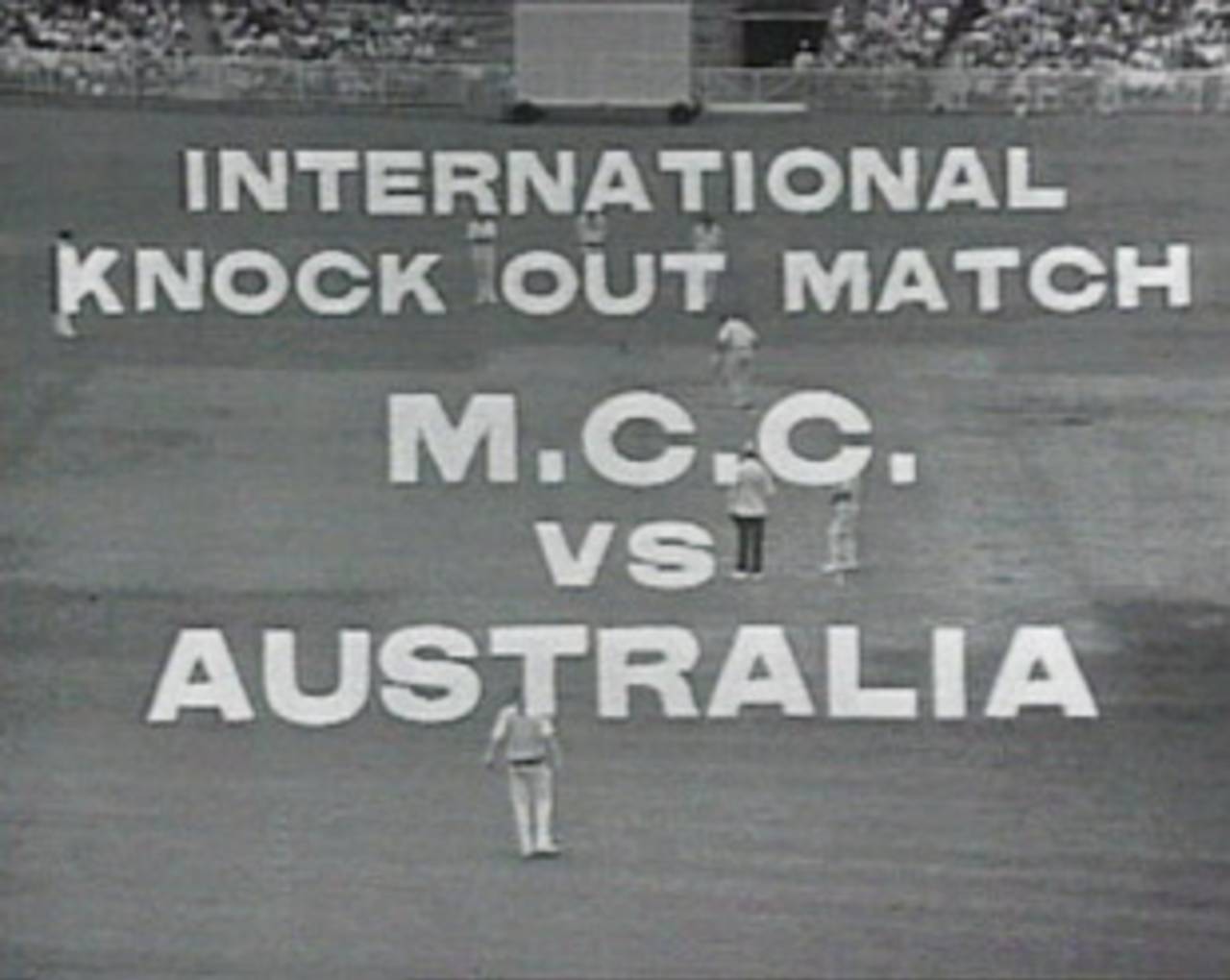Before Twenty20 came along, the one-day game was cricket's biggest agent of change. Without doubt, it has been the lesser game to Test cricket, but it has made the most difference. At one level one-day cricket can be accused of debasing some of the core values of cricket; at another, it added robustness and dynamism to the sport and helped keep it contemporary.
Traditionalists squirm at its corrupting influence, yet it is undeniable that it made the most traditional version of the game, Test cricket, sharper, more competitive and more appealing to new audiences. By a distance the one-day international was the most significant development in cricket in the 20th century. Incredible, then, that the first match of this kind was a
chance happening.
Though the idea of one-day cricket was conceived in the late 1950s by a committee instituted by the MCC to arrest the decline of attendances at county matches, and the Gillette Cup, a tournament comprising 60-overs-a-side matches was born in 1963, it was not until 1971 that the first ODI was played. Like the first Test, it was played
at the Melbourne Cricket Ground between England and Australia. It was even meant to be a Test: the match had been washed out and a 40-over game was conceived to compensate the spectators, but it took several meetings between Don Bradman, then the chairman of the Australian Cricket Board, and Cyril Hawke, the president of the MCC, to agree on official status for the game. Forty-six thousand spectators watched Australia win by 40 runs, and cricket's most powerful idea took concrete shape.
The most radical departure from time-honoured norms was immediately obvious: one-day cricket had no place for a draw. For generations of players weaned on a steady diet of one-day cricket, the draw became, if not entirely dishonourable, an increasingly unappealing proposition. The pace of the game quickened considerably; players became more athletic; they ran harder, between the wickets and after the ball; they leapt and they dived; they gave up pristine whites for bright team colours, and the sun for halogen lamps. Cricket, a connoisseur's preserve for more than a century, became a spectacle for Everyman.
It wasn't without cost. One-day cricket was blatantly discriminatory against the bowler, and a series of restrictive measures - a fixed quota of overs per bowler, fielding restrictions in varying degrees, a cap on bouncers - seriously undermined his potency and made run-making relatively easy. Hearteningly, though, one-day cricket hasn't turned into an unqualified haven for mediocrity: barring the odd Bevans, the greats - the Richardses, the Tendulkars, the Akrams, the Pontings - have dominated both forms with equal majesty; and despite fears that spinners might be belted out of the game, bowlers like Warne, Murali and Kumble not only survived, but were match-winners.
But over the years, and mainly because of a mindless surfeit of it and the gradual shift towards batsman-friendly pitches, the 50-over format has grown jaded, and after the success of Twenty20, the clamour has grown for further tweaking, and in fact even abolishing it. If the worst-case scenario came to pass, it would be the unkindest cut: for at least three decades, the ODI has been cricket's biggest bread-winner.
